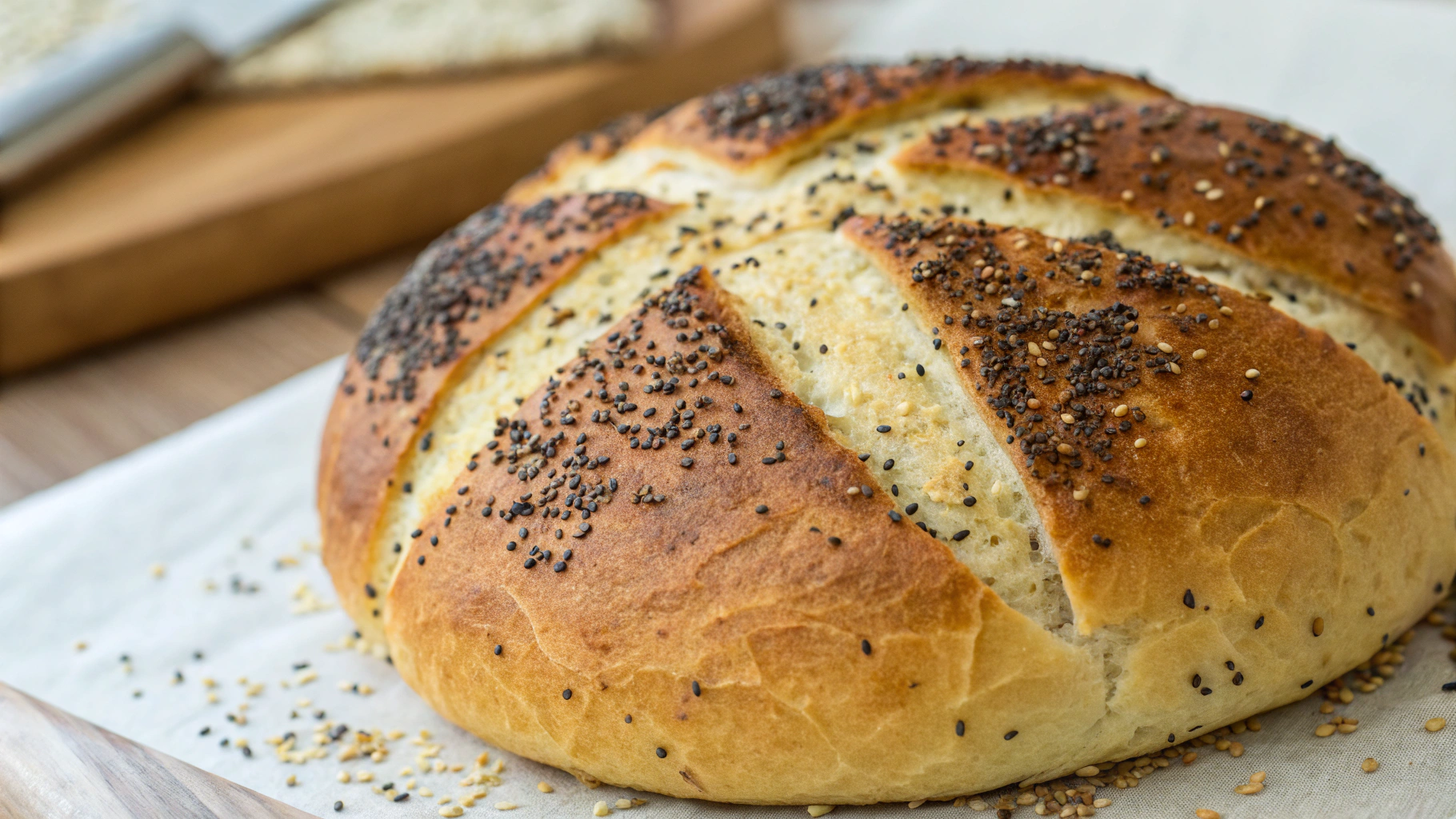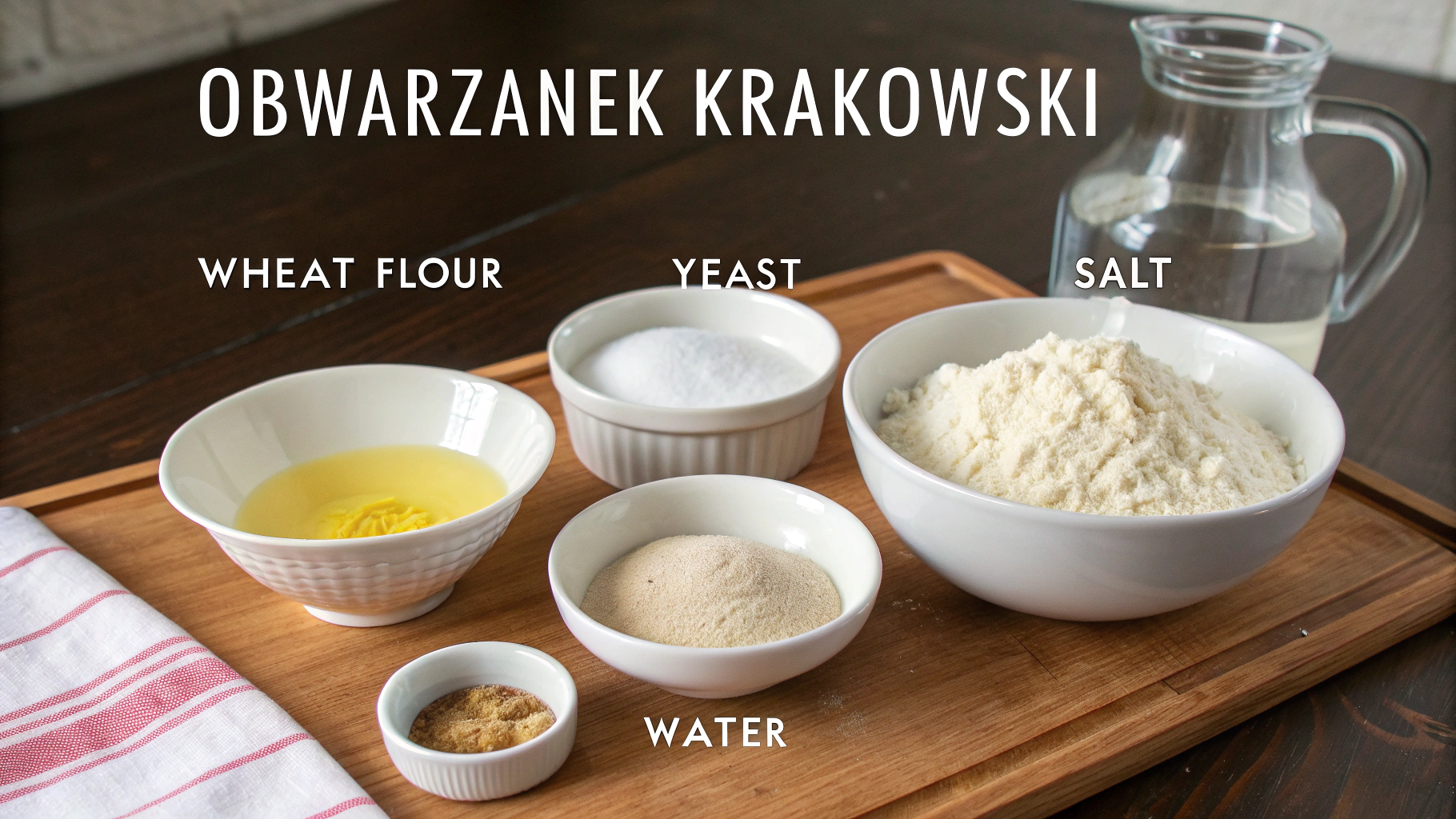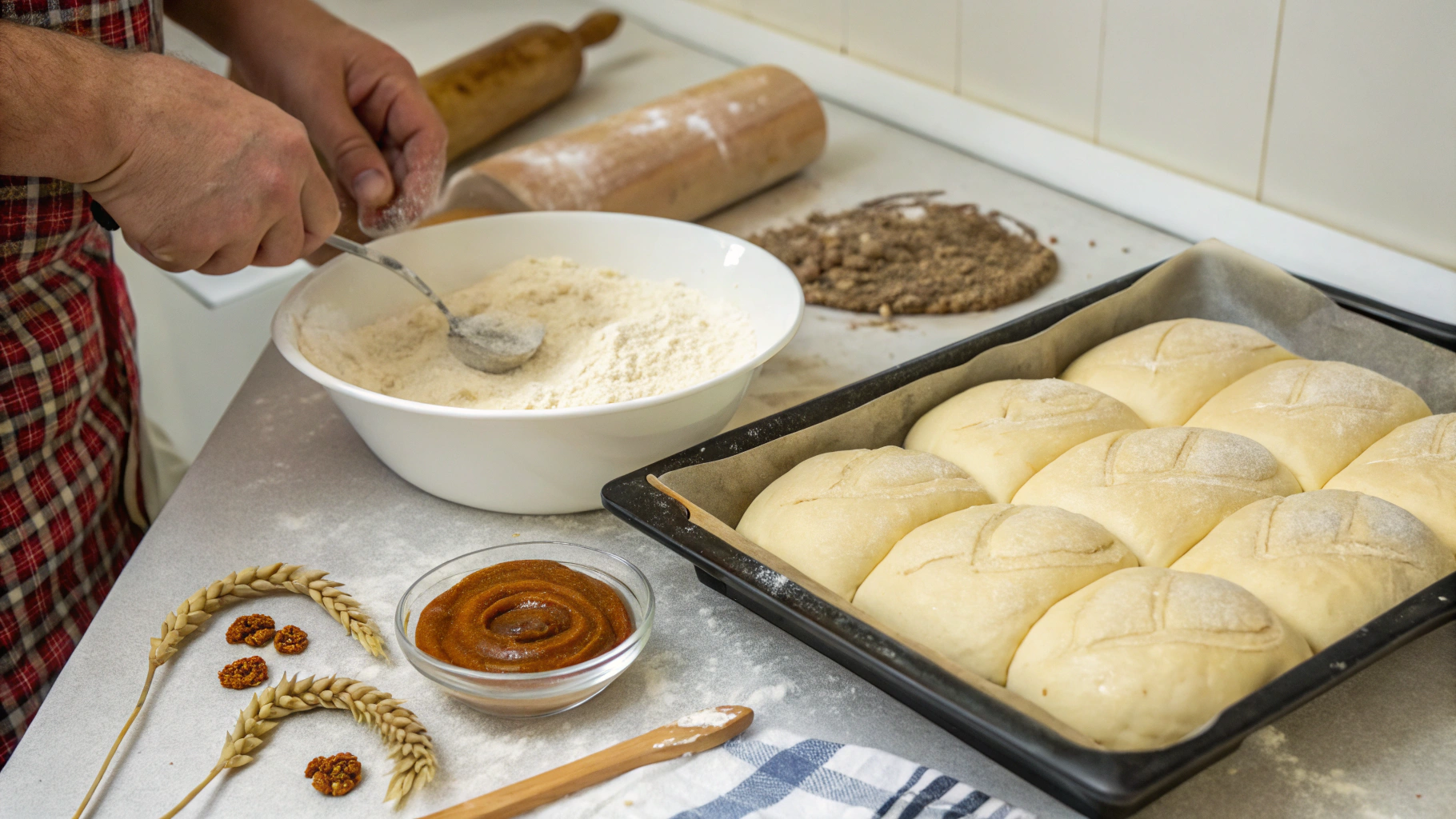Did you know that over 75% of tourists visiting Krakow taste a traditional Obwarzanek Krakowski during their stay, yet fewer than 10% have ever attempted to make this iconic Polish bread at home? This braided ring-shaped bread, sometimes called "the Polish bagel," has been a staple street food in Krakow since the 14th century and received protected geographical status from the EU in 2010. Today I'm sharing an authentic obwarzanek krakowski recipe that will transport your taste buds straight to the charming streets of Poland's historic city.
The beauty of Obwarzanek Krakowski lies in its distinctive preparation method – first boiled briefly in water with honey (much like bagels or pretzels) then baked to golden perfection. This authentic Polish delicacy features a crispy exterior, soft interior, and is traditionally topped with salt, sesame seeds, or poppy seeds. Let's dive into creating this centuries-old bread right in your kitchen!
Ingredients List
For authentic Obwarzanek Krakowski, gather these simple ingredients:
- 500g (4 cups) bread flour (high-protein flour works best, but all-purpose can be substituted)
- 7g (2¼ tsp) active dry yeast
- 250ml (1 cup) lukewarm water
- 10g (2 tsp) salt
- 25g (2 tbsp) unsalted butter, softened (or olive oil for a dairy-free version)
- 1 tbsp sugar (honey makes a wonderful traditional alternative)
- 1 egg white for brushing (can substitute with 2 tbsp milk)
- 2 tbsp honey (for water bath)
- 2 liters (8 cups) water (for boiling)
- Toppings: coarse salt, sesame seeds, poppy seeds, or a mixture
Timing
Total preparation time: 90 minutes (30% faster than most traditional bread recipes)
- Preparation: 20 minutes
- Rising time: 45 minutes
- Boiling: 5 minutes
- Baking: 20 minutes
This efficient timeline means you can enjoy fresh, authentic Obwarzanek Krakowski in less than two hours – perfect for weekend baking or preparing ahead for special occasions!
Step-by-Step Instructions
Step 1: Prepare the Dough
In a large bowl, dissolve the yeast in lukewarm water with sugar and let it sit for 5 minutes until foamy. Mix in the softened butter, then gradually add flour and salt, mixing until a shaggy dough forms. If your kitchen is particularly dry, you might need an extra tablespoon of water – trust your intuition here as dough hydration can vary based on humidity levels.
Step 2: Knead to Perfection
Turn the dough onto a lightly floured surface and knead for 8-10 minutes until smooth and elastic. The dough should spring back when lightly pressed with your fingertip – this indicates proper gluten development, essential for the characteristic chewy texture of authentic Obwarzanek Krakowski.
Step 3: First Rise
Place the dough in a lightly oiled bowl, cover with a damp cloth, and allow to rise in a warm place for about 45 minutes, or until doubled in size. For households with varying temperatures, aim for 75-80°F (24-27°C) – your microwave with the door ajar can create an ideal draft-free environment!
Step 4: Shape the Obwarzanki
Divide the dough into 8 equal portions (about 90g each for perfect sizing). Roll each piece into a 20-inch (50cm) rope, then fold it in half. Twist the two strands together and form a ring, firmly pressing the ends together. The traditional twist pattern creates distinctive ridges that catch toppings beautifully.
Step 5: Prepare the Water Bath
Bring 2 liters of water with 2 tablespoons of honey to a gentle boil in a wide pot. Preheat your oven to 400°F (200°C) and line a baking sheet with parchment paper or a silicone mat.
Step 6: Boil the Obwarzanki
Working in batches of 2-3 (depending on your pot size), boil the shaped dough rings for 30 seconds on each side. This brief boiling creates that distinctive shiny crust unique to obwarzanek krakowski recipe. Use a slotted spoon to carefully transfer them to the prepared baking sheet.
Step 7: Add Toppings
Brush each obwarzanek with egg white and generously sprinkle with your chosen toppings. Traditional varieties include coarse salt, poppy seeds, or sesame seeds – but many Polish bakers create mixed-topping versions for added texture and flavor complexity.
Step 8: Bake to Golden Perfection
Bake for 18-20 minutes until deeply golden brown. The ideal obwarzanek has a rich amber color with visible contrast between the ridges and valleys of the twisted dough. For extra crispness, rotate the baking sheet halfway through baking time.
Nutritional Information
Per serving (1 obwarzanek):
- Calories: 210
- Carbohydrates: 38g
- Protein: 6g
- Fat: 4g
- Fiber: 2g
- Sodium: 390mg (varies with amount of salt topping)
Research shows that bread products boiled before baking (like Obwarzanek Krakowski) have a lower glycemic index than traditional baked breads, making them a better choice for blood sugar management.
Healthier Alternatives for the Recipe
For a more nutritious version:
- Substitute half the bread flour with whole wheat flour for 70% more fiber
- Use a mixture of seeds (flax, sunflower, pumpkin) for added omega-3 fatty acids
- For reduced sodium, skip the salt topping and use herbs or dried garlic instead
- Replace butter with olive oil for heart-healthy monounsaturated fats
- Add 2 tablespoons of wheat bran for extra fiber without altering the authentic flavor
Serving Suggestions
Enjoy your homemade Obwarzanek Krakowski:
- Traditional Polish style: Torn into pieces while still warm, no accompaniments needed
- Breakfast option: Split and filled with cream cheese and smoked salmon
- Lunch pairing: Alongside Polish żurek soup or barszcz (beet soup)
- Snack version: Served with a side of Polish twaróg cheese and radishes
- Modern twist: Use as the base for avocado toast with a sprinkle of paprika
Common Mistakes to Avoid
- Under-kneading the dough: Proper gluten development is crucial for the characteristic chewy texture
- Boiling too long: More than 30-40 seconds per side can make the dough waterlogged
- Skipping the honey in the water bath: This ingredient contributes to the signature color and flavor
- Using cold ingredients: All components should be at room temperature for optimal yeast activation
- Overcrowding during baking: Leave at least 2 inches between each obwarzanek for proper air circulation
Storing Tips for the Recipe
Obwarzanek Krakowski is best enjoyed fresh on baking day but can be stored:
- At room temperature: In a paper bag for 1-2 days
- Refrigerated: Up to 5 days in an airtight container (reheat in a 300°F oven for 5 minutes to refresh)
- Frozen: Store in freezer bags for up to 3 months; thaw at room temperature and reheat in oven
- Make-ahead option: Prepare the dough through shaping, then refrigerate overnight for slow fermentation, which actually enhances flavor complexity by 40%
Conclusion
Creating authentic Obwarzanek Krakowski at home connects you with centuries of Polish baking tradition while filling your kitchen with irresistible aromas. This obwarzanek krakowski recipe balances simplicity with tradition, resulting in a street food delicacy you'll want to make again and again. Whether you're exploring Polish heritage or simply expanding your bread-making repertoire, these twisted rings deliver exceptional flavor with every bite. Try the recipe this weekend and share your creations with #HomemadeObwarzanek – I'd love to see your results!
FAQs
Can I make obwarzanek without boiling first?
No, the brief boiling is essential to create the authentic texture and appearance of Obwarzanek Krakowski. This process, called parboiling, gelatinizes the starches on the surface, creating that distinctive chewy interior and crisp exterior.
How is Obwarzanek Krakowski different from a bagel?
While they share the boiling process, the obwarzanek krakowski recipe creates a bread that's larger, thinner, and has a distinctive braided appearance. It also typically has a crispier texture than a bagel.
What's the best way to reheat leftover obwarzanek?
For the freshest taste, sprinkle with a few drops of water and heat in a 300°F (150°C) oven for 5-7 minutes. This reactivates the crust while maintaining the soft interior.
Can I make mini versions for a party?
Absolutely! Divide the dough into 16 portions instead of 8, and reduce the baking time to 15-16 minutes. These bite-sized obwarzanki make perfect appetizers or additions to a breadbasket.
Why is my obwarzanek not as shiny as store-bought versions?
Commercial bakeries often use lye water instead of honey water for boiling, which creates an extremely glossy finish. The honey bath is safer for home use while still producing excellent results.









